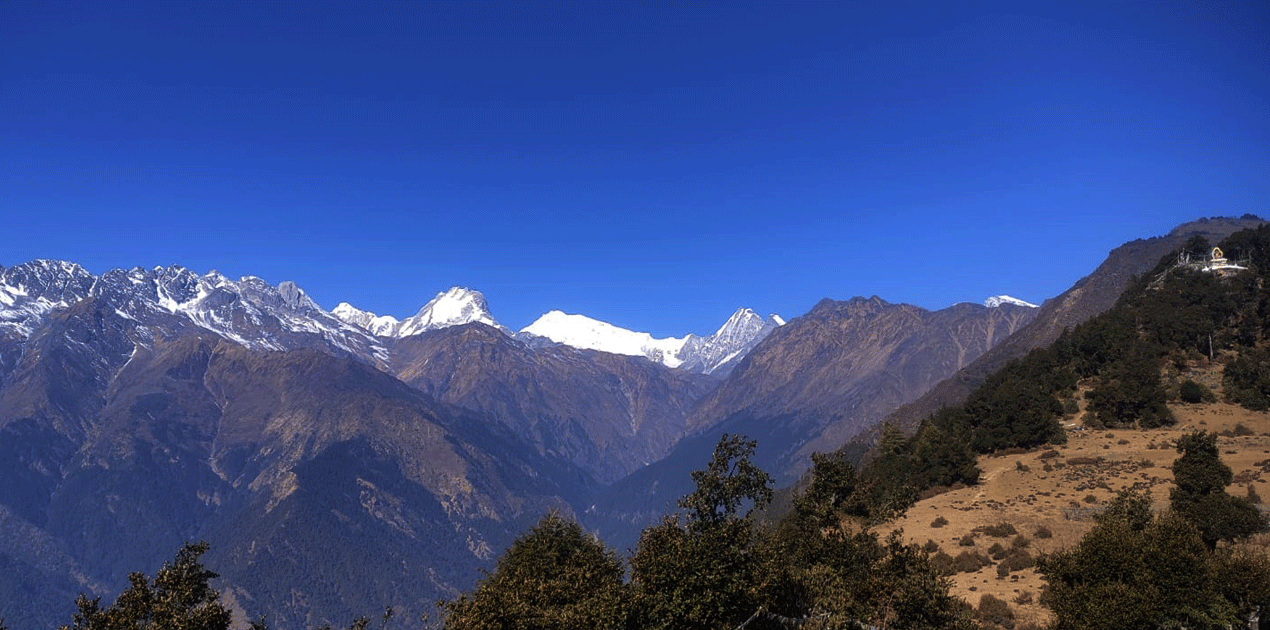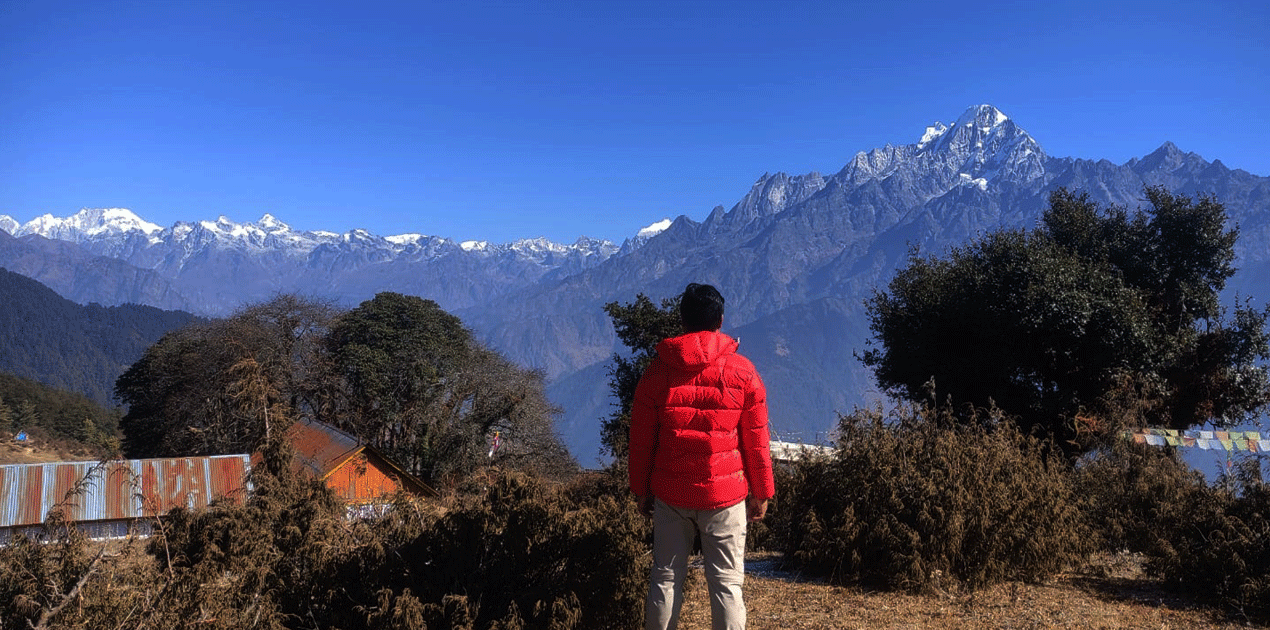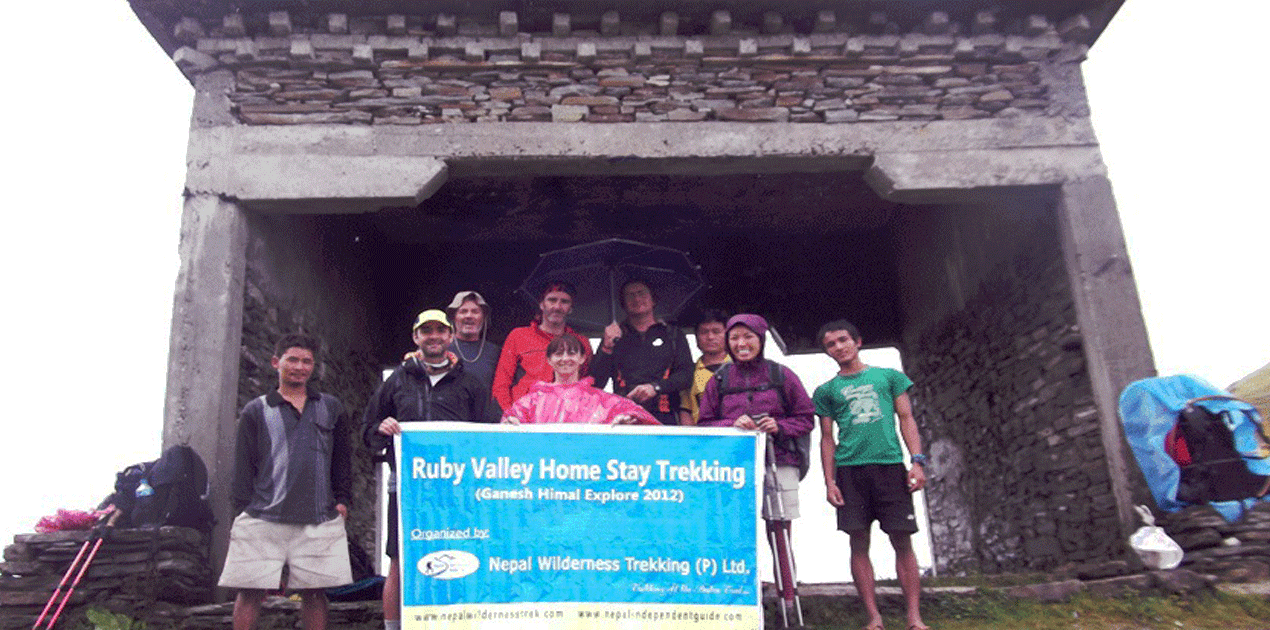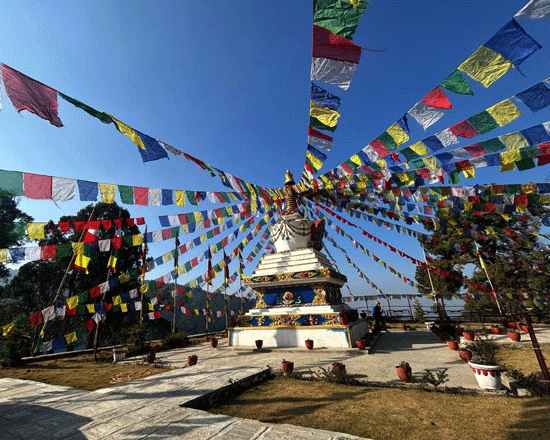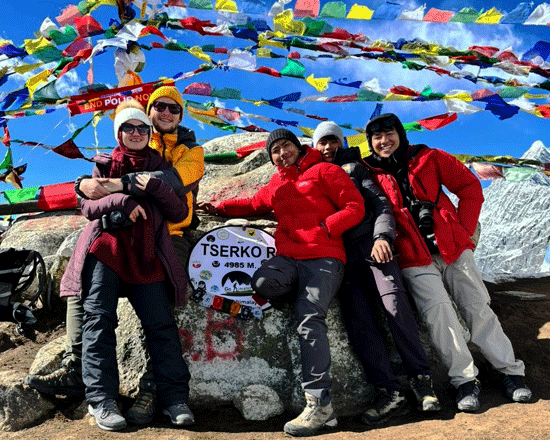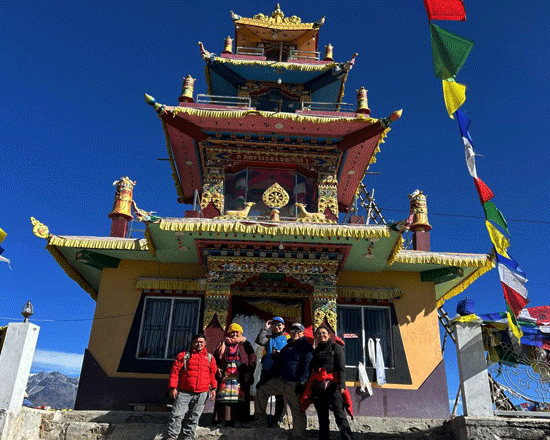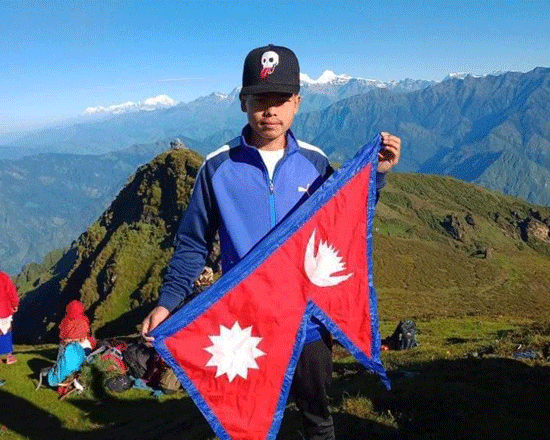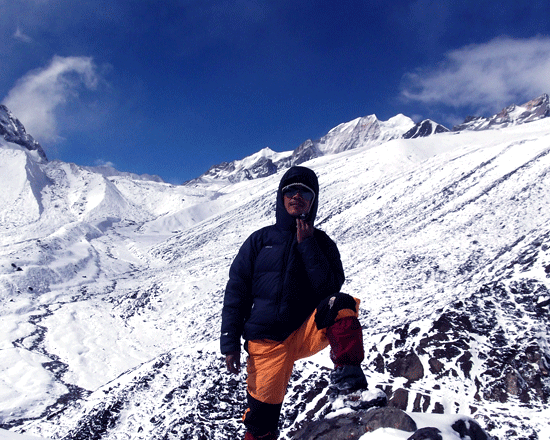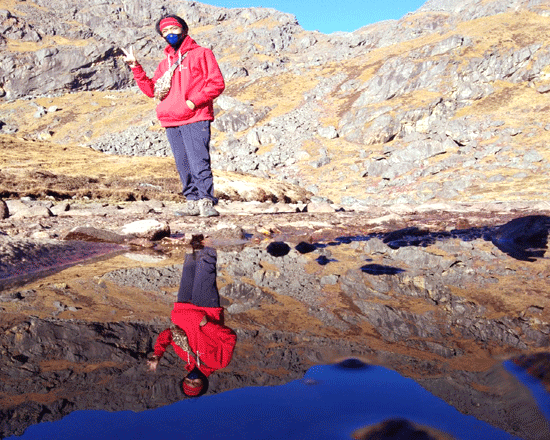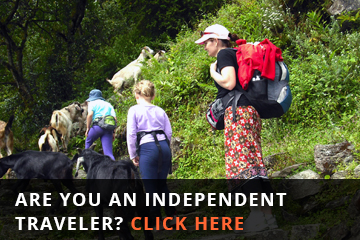Pangsang La Pass Trek
Pangsang La Pass Trek
Langtang RegionTrip Facts
Since the terrain can be hard and the days long, hikers on these treks should be in good physical condition and have some previous mountain walking experience. Steep climbing may be involved, although it is never necessary to use ropes. Treks at this level can he arranged for periods of 16 to 21 days. Typically, a gradual ascent through a green river valley will lead you up to a number of high passes, where you will reach the altitude of 5416m. Often times, you will get a close insight into the Tibetan culture. Participants should expect to trek above 5416m/17872ft.
100%
Overview
Ruby Valley Pangsang la pass Trek
The Pangsang La Pass Trek is an extraordinary journey through one of Nepal’s most remote and scenic regions. Situated in the heart of the Ruby Valley and overlooked by the majestic Ganesh Himal, this trek offers a perfect blend of adventure, cultural immersion, and breathtaking mountain views. Ideal for trekkers seeking an off-the-beaten-path experience, the Pangsang La Pass Trek provides an unparalleled opportunity to explore traditional Tamang villages and enjoy the natural beauty of the Himalayas.
Overview of the Pangsang La Pass Trek
The Pangsang La Pass Trek is a less frequented route, making it an excellent choice for those who prefer solitude and unspoiled landscapes. This trek typically spans 9 to 10 days, depending on the chosen itinerary, and covers a variety of terrains from subtropical forests to alpine meadows. It offers trekkers a chance to witness the diversity of flora and fauna, traditional Tamang culture, and some of the most spectacular mountain views in Nepal.
Scenic Landscapes and Natural Beauty
One of the main attractions of the Pangsang La Pass Trek is its diverse and stunning landscapes. The journey begins in the lower elevations of the Ruby Valley, characterized by lush forests, terraced fields, and charming villages. As you ascend, the scenery transitions into rugged terrains, dense rhododendron forests, and expansive meadows. The trail offers panoramic views of the Ganesh Himal range, including peaks such as Ganesh I, II, and III, along with glimpses of other Himalayan giants like Langtang Lirung and Manaslu.
The Pangsang La Pass, situated at an altitude of 3,800 meters (12,467 feet) above sea level, is the trek’s highest point. From Pangsang Danda, trekkers can enjoy magnificent views of Ganesh Himal, Langtang Himal, Paldor Peak, and Manaslu Himal. Pangsang Danda is a beautiful high point between Somdang and Tipling village, there is another pass called Singla Pass Trek also in this area which requires Camping for a few days. these both offer stunning mountain views.
Cultural Richness and Tamang Heritage
In these villages, trekkers can explore ancient monasteries, colorful hortens (stupas), and intricately carved mani walls. The Tamang culture is deeply influenced by Tibetan Buddhism, which is reflected in the region’s architecture, festivals, and religious practices. Engaging with the local communities offers valuable insights into their way of life, connection with nature, and spiritual beliefs.
Adventure and Wilderness Experience
The Pangsang La Pass Trek is ideal for adventurers seeking a challenging and rewarding journey. The trail involves steep ascents and descents, narrow paths, and rugged terrains, demanding physical fitness and mental endurance. However, the effort is well worth it, as trekkers are constantly rewarded with stunning landscapes, unique flora and fauna, and a sense of achievement.
The trek also offers a sense of wilderness and solitude, as it traverses remote areas with limited human habitation. This isolation allows trekkers to connect deeply with nature, enjoying the tranquility and serenity of the Himalayan wilderness. Camping under the starry skies, surrounded by towering peaks and the sounds of nature, is an experience that leaves a lasting impression.
Flora and Fauna
The Pangsang La Pass Trek is a haven for nature enthusiasts and wildlife lovers. The region is home to a diverse range of flora and fauna, thanks to its varied altitudes and ecosystems. In the lower regions, trekkers can find subtropical forests with species like oak, pine, and rhododendron. As the altitude increases, the vegetation changes to alpine meadows, home to colorful wildflowers and medicinal plants.
The trek also offers opportunities to spot various wildlife species. The forests are inhabited by animals such as red pandas, Himalayan black bears, langurs, and musk deer. Birdwatchers will delight in the presence of numerous bird species, including pheasants, eagles, and vultures. The biodiversity of the region adds another layer of excitement and discovery to the trekking experience.
Holy Lakes and Rivers
In addition to its natural beauty, the Ruby Valley region is home to several holy lakes and rivers that hold significant cultural and spiritual value. Trekkers can visit Kalo Kunda, Seto Kunda, and Ganesh Kunda, three sacred lakes situated in the lap of Ganesh Himal. These serene and pristine lakes are not only picturesque but also considered holy by the local communities.
The Ankhu Khola, a popular river in the region, flows from these three ponds and the melted snow of the Ganesh Himal. The river adds to the scenic beauty of the trek, with its crystal-clear waters and soothing presence.
Homestay Accommodations
The Ruby Valley Pangsang La Pass area offers homestay accommodations, providing trekkers with a unique opportunity to experience the local lifestyle. Unlike the luxury tea houses found on more popular trekking routes, the homestays in this region are basic but comfortable. They offer a glimpse into the daily lives of the Ghale, Gurung, Tamang, and Dalit indigenous people.
Here are some of the homestay options available along the trek:
- Somdang: Anjali Homestay
- Tipling Village: Selthapa Homestay
- Chalish Village: Danda Ghar Homestay
- Borang Village: Ruby Valley Homestay
- Lapa Village: Ganesh Himal Homestay
- Borang Village: Ruby Valley Homestay
These homestays provide nice accommodations and better toilet facilities compared to other local homes, making the trek more comfortable and enjoyable. this is one of the top 10 best treks in Nepal.
Best Time to Trek
The best time to undertake the Pangsang La Pass Trek is during the spring (March to May) and autumn (September to November) seasons. During these periods, the weather is generally stable, with clear skies and moderate temperatures. The spring season offers the added beauty of blooming rhododendrons and other wildflowers, while the autumn season provides crystal-clear views of the mountains.
Winter (December to February) can be challenging due to cold temperatures and snowfall at higher altitudes, but it is possible for experienced trekkers. Monsoon season (June to August) brings heavy rainfall, making the trails slippery and increasing the risk of landslides, so it is not recommended for trekking.
Preparation and Tips
Proper preparation is essential for a successful and enjoyable Pangsang La Pass Trek. Here are some tips to help trekkers get ready:
- Physical Fitness: The trek involves steep climbs and descents, so good physical fitness is crucial. Regular exercise, including cardio and strength training, can help prepare for the trek.
- Packing Essentials: Pack appropriate clothing for varying temperatures, including warm layers, a waterproof jacket, and sturdy trekking boots. Don’t forget essentials like a hat, gloves, and a good-quality sleeping bag.
- Acclimatization: Proper acclimatization is important to prevent altitude sickness. Take rest days as needed and stay hydrated throughout the trek.
- Permits: Obtain the necessary permits, such as the TIMS (Trekkers’ Information Management System) card and the Ganesh Himal Conservation Area Permit.
- Local Guide: Hiring a local guide can enhance the trekking experience by providing insights into the culture, history, and natural surroundings.
- Respect Local Culture: Be respectful of local customs and traditions. Interact with locals with humility and curiosity, and always seek permission before taking photos of people or religious sites.
Conclusion
The Pangsang La Pass Trek in the Ruby Valley is a hidden gem that offers an unparalleled adventure for trekkers seeking a unique and remote experience. With its scenic landscapes, rich Tamang culture, traditional villages, and breathtaking mountain views, this trek provides a perfect blend of nature, culture, and adventure. Whether you are an experienced trekker or a nature enthusiast, the Pangsang La Pass Trek promises an unforgettable journey through one of Nepal’s most beautiful and less-explored regions.
Detail Itinerary
- Day 01: Drive from Kathmandu to Syabrubesi, the starting point of the trek. Enjoy scenic views of the Trishuli River and surrounding landscapes.
- Day 02: Begin the trek by ascending to the Tamang village of Gatlang. Explore the village, interact with locals, and visit the nearby monastery.
- Day 03: Continue trekking through forests and terraced fields to reach Somdang, a picturesque village with stunning mountain views. Accommodation is available at Anjali Homestay.
- Day 04: Ascend to Pangsang La Pass, the trek's highest point. Enjoy panoramic views of the Himalayas and take in the natural beauty. Accommodation is available at Pangsang Hotel.
- Day 05: Descend from the pass to the village of Tipling. Experience the local culture and traditions of the Tamang people. Accommodation is available at Selthapa Homestay.
- Day 06: Trek to Chalish Continue trekking through scenic landscapes to Chalish, another charming Tamang village. Visit local homes and monasteries. Accommodation is available at Danda Ghar Homestay.
- Day 07: Trek to Lapa, passing through forests and rivers. Enjoy the tranquility of the remote surroundings.
- Day 08: Trek to Borang, a village known for its terraced fields and traditional lifestyle. Interact with locals and learn about their way of life.
- Day 09: Drive back to Kathmandu, marking the end of the trekking adventure. Spend the evening in the city, reflecting on the journey.
Cost Included
- Hotel to the bus park by car.
- Kathmandu to Syabrubensi and Borang to Kathmandu by Bus and sharing jeep
- Lodge accommodation on homestay during your trekking.
- Italian, Chinese, Nepali, Indian, and many other European Delicious Meals three times a day (Breakfast, lunch, and dinner chosen by Menu).
- National park entrance permits and TIMS card.
- One fluent English speaking, government registered, experienced, first aid trained guide who is friendly and familiar with this area and required porters, one porter for two clients.
- Required Equipment sleeping bag jackets
- Guides/porters- food, lodge, bus transportation, salary, insurance, equipment, etc.
Cost Excluded
- Hotel in Kathmandu
- Personal equipment
- All beverages, including soft and hard drinks such as Coke and beer
- Drinking water/mineral water during the trek
- Desserts
- Hot showers and laundry
- Personal Insurance
- Tips for guides and porters
- Excluded are all costs and expenses not listed under "cost includes"
- Costs or delays beyond the control of the management, such as landslides, weather conditions, itinerary modifications due to safety concerns, illness, changes in government policies, strikes, etc.

